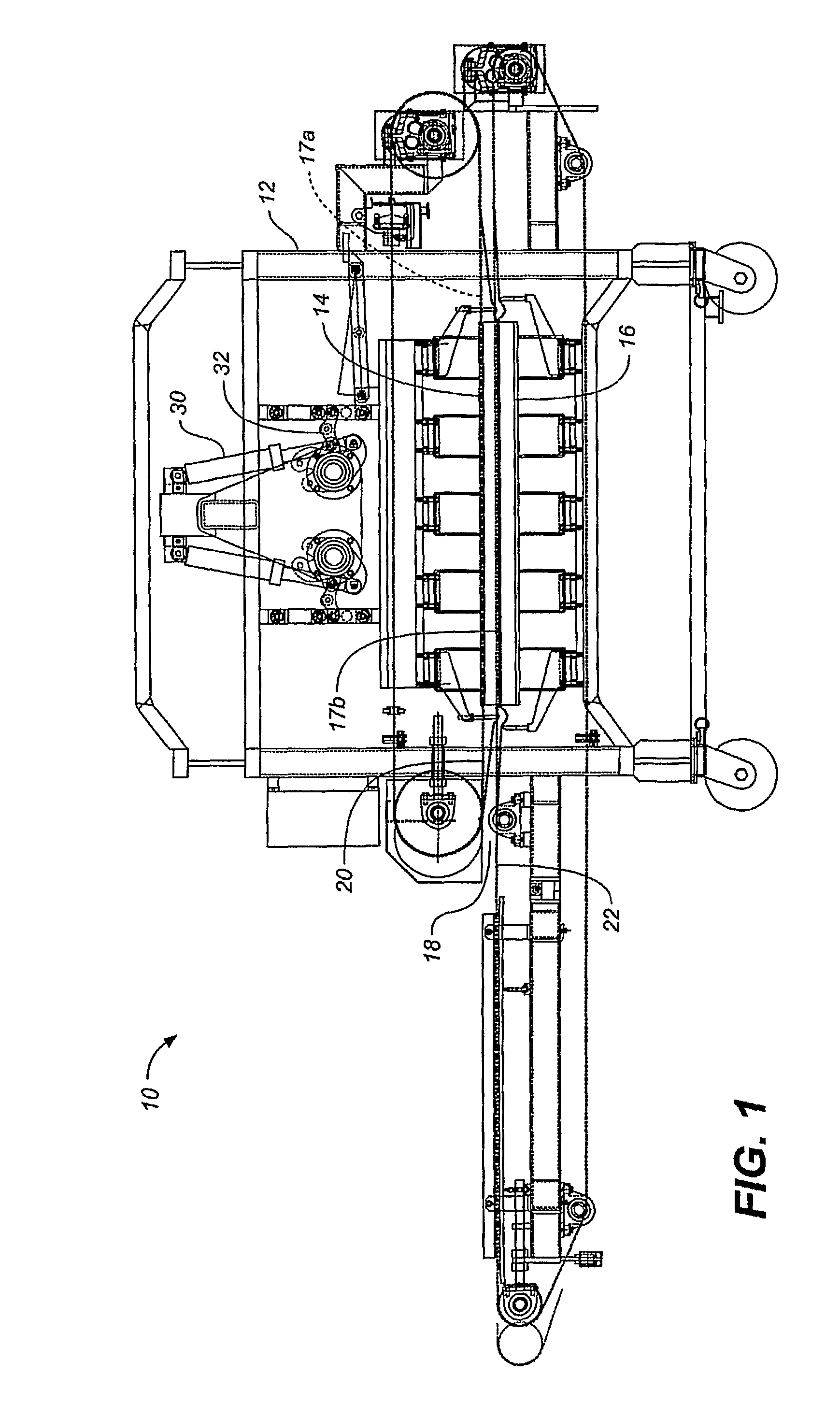Semi-Continuous Meat Press Method and Apparatus
a semi-continuous pressing and meat technology, applied in meat tenderising, butchering, manufacturing tools, etc., can solve the problems of not doing anything to the fibers in the thin sections, destroying the meat fibers in the thick sections of the meat piece, and conventional flatteners will not work at all
- Summary
- Abstract
- Description
- Claims
- Application Information
AI Technical Summary
Benefits of technology
Problems solved by technology
Method used
Image
Examples
Embodiment Construction
[0024]Referring to FIG. 1, there is illustrated therein a new and improved semi-continuous meat press apparatus, generally denominated 10 herein. FIG. 1 illustrates a first preferred embodiment of the semi-continuous meat press apparatus 10, comprising a frame 12 supporting an upper press pad 14 and a lower press pad 16, positioned adjacent one another to define an open position 17a and a closed position 17b, the closed position having a selectable, adjustable gap 18 between the pads. Upper flexible belt 20 and lower flexible belt 22 are interposed between the upper and lower press pads, and serve to convey meat pieces between the press pads for the pressing step. The upper and lower press pads 14, 16 (and upper and lower flexible belts 20, 22) are urged together by hydraulic cylinders 30 through four bar mechanical linkage 32, which may include coordinating gears. Alternatively, other hydraulic, mechanical, or other motive means may be employed to achieve the requisite compression ...
PUM
 Login to View More
Login to View More Abstract
Description
Claims
Application Information
 Login to View More
Login to View More - Generate Ideas
- Intellectual Property
- Life Sciences
- Materials
- Tech Scout
- Unparalleled Data Quality
- Higher Quality Content
- 60% Fewer Hallucinations
Browse by: Latest US Patents, China's latest patents, Technical Efficacy Thesaurus, Application Domain, Technology Topic, Popular Technical Reports.
© 2025 PatSnap. All rights reserved.Legal|Privacy policy|Modern Slavery Act Transparency Statement|Sitemap|About US| Contact US: help@patsnap.com


